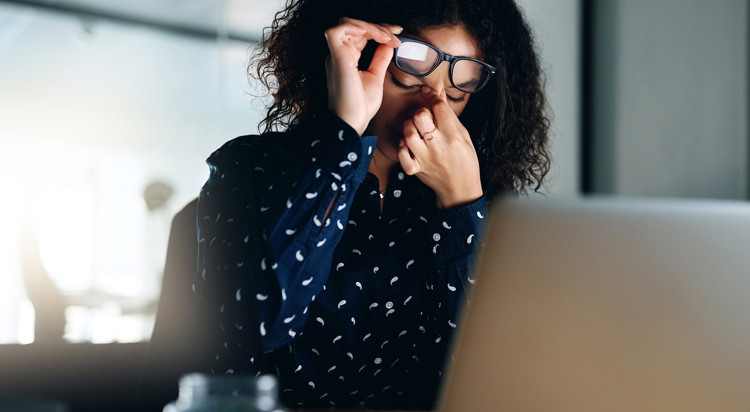
Soothing dry eyes
Tips for dry eyes (that might bring tears of relief!)

8 June 2021
Many of us have experienced dry eyes at some point – whether they’re from allergies like hay fever, not enough sleep or too much screen time (sound familiar?). While dry eyes generally clear up on their own, dry eye disease can be more of a concern. Here's what to look out for, how to treat dry eyes at home and when to get help.
Eyes that are more than just ‘dry’
Other than the obvious (dryness!), signs of dry eye disease can also include:
- Stinging or burning eyes
- Vision that changes between blinks
- Red eyes (around the whites of your eyes or the rim of your eyelids)
- Eyes that feel tired and heavy
- A filmy, sticky feeling around your eyes and eyelids
- Watery eyes (believe it or not!), as your body’s response to the eye surface being so dry.
Not a dry eye in the house
If you suffer from dry eyes, here are some things you can try at home – hopefully it’s enough to give you some welcome relief:
Eye drops
As an easy first step, artificial tears are formulated to restore moisture on your eye’s surface. You can get them over the counter at pharmacies and supermarkets. Try to avoid drops that are for itchy or red eyes – these often contain other chemicals that you don’t need, such as antihistamines or vasoconstrictors.
Get a change of scene
If you have air con or a heater blowing near your face, this can make your symptoms worse. Try sitting somewhere else, or at least direct the air away from you. Using a humidifier in the room can also help.
Warm compress
Often recommended for something called meibomian gland dysfunction (a problem with the tiny glands that make tears), a warm compress can soothe dry eyes. Get a microwaveable heat pack – or even a face washer soaked in hot water will do – and rest it over your closed eyes for around 10 minutes. (You’ll need to reheat the washer or use more than one, just make sure it’s not too hot.) You can do this twice a day.
Less staring at the screen
With many of us spending so much time on our screens, digital eye strain is a common cause of dry eyes. As hard as it is to tear yourself away, try to take regular breaks (the perfect excuse for a walk around the block). Studies have shown that using a screen means you blink less, so remember to blink often and fully (or shut your eyes for a moment to give them a rest – no dozing off on the job though!). See more on managing digital eye strain.
For help with treating dry eyes, you can book an appointment with an optometrist at one of our Health Centres or optical providers. If your symptoms persist, please talk to your doctor.



